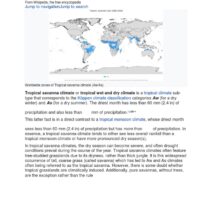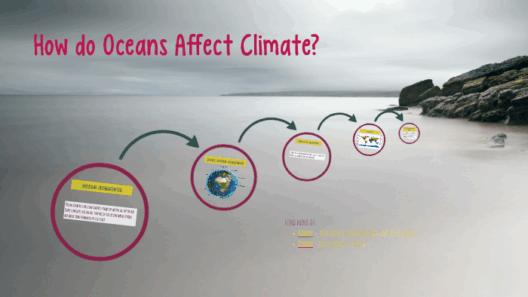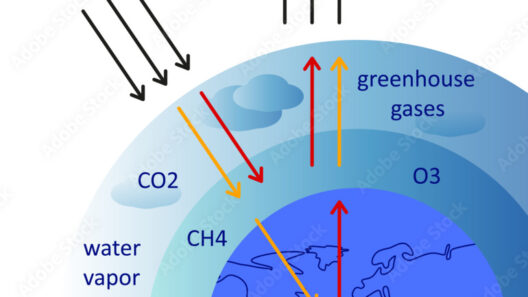The concept of a runaway greenhouse effect represents one of the most alarming potential outcomes of climate change. Although initially coined to describe a hypothetical scenario where temperatures spiral out of control due to excessive greenhouse gases, this phenomenon has a striking real-world counterpart in Venus, our closest planetary neighbor. Understanding the mechanisms behind this extreme warming and the consequences it entails could be vital for our predictions about Earth’s climate future.
Scientists have long posited that the conditions on Venus provide a stark warning about what might happen if Earth were to succumb to a similar fate. With surface temperatures averaging a scorching 900 degrees Fahrenheit (475 degrees Celsius) and atmospheric pressures 92 times greater than Earth’s, Venus exemplifies the catastrophic outcomes of unchecked greenhouse gas accumulation.
The runaway greenhouse effect occurs when a planet’s atmosphere becomes too thick with greenhouse gases, rendering it incapable of dissipating heat. On Venus, carbon dioxide comprises about 96.5% of its atmosphere, trapping nearly all of the solar energy it receives. The significant influx of solar energy, combined with the inability to cool efficiently, leads to a “runaway” scenario where temperatures surge relentlessly. This planetary predicament serves as a cautionary tale for Earth.
As climate change accelerates on our planet, the escalating concentration of carbon dioxide and other greenhouse gases raises serious concerns. Earth’s atmosphere has swelled with carbon emissions from deforestation, fossil fuel combustion, and livestock agriculture. A singular concern emerges: are we, too, hurtling towards a potential runaway greenhouse scenario?
Drawing lessons from Venus, it’s imperative to comprehend the conditions that precipitated its extreme environment. To achieve this understanding, we must scrutinize how solar energy interacts with a thick atmosphere and the resultant temperature dynamics.
Analyzing Venusian Atmosphere: Composition and Consequence
The Venusian atmosphere, overlaid with sulfuric acid clouds, creates a dense, opaque layer that reflects much of the sunlight. Yet, what sunlight permeates contributes to an overwhelming greenhouse effect. The atmospheric pressure induces challenges that are often overlooked. This immense weight contributes to the heat retention—making it not just a matter of gaseous composition, but also density—a pivotal element in understanding global warming implications.
Earth, by contrast, possesses a relatively thin atmosphere. Its balance of greenhouse gases allows for the necessary heat retention to maintain conditions suitable for life. However, as greenhouse gas concentrations breach critical thresholds, we risk crossing into a similar phase where energy retention outstrips our planet’s natural cooling mechanisms. In large measure, the stability of Earth’s climate hinges upon our response to current greenhouse gas emissions and environmental policies.
Effects on Earth: Indicators of Climate Change
The runaway greenhouse effect on Venus serves as an extreme model for Earth’s future. Current indicators of climate change provide alarming signals: melting polar ice caps, rising ocean levels, and an increase in the frequency and intensity of extreme weather events. Each of these signs demonstrates how our planet’s ecosystems are already stressed. The potential for more severe consequences looms, similar to those that planetary scientists observe on Venus.
Critical levels of greenhouse gases are not simply benchmarks in scientific papers; they correlate with real-world effects that can alter human lives and ecosystems alike. The concern isn’t just existential; it encompasses economic stability, agricultural productivity, and even national security. As regions experience shifting climate patterns, the food supply chains may become strained, potentially triggering scarcity and conflict.
By understanding the concept of the runaway greenhouse effect, we examine a scenario emphasizing the need for urgent climate action. Policymakers, businesses, and individuals must grasp that counteracting greenhouse emissions is not merely an environmental issue but one of global importance affecting economic and social frameworks.
Mitigation Strategies: Preventive Measures against Catastrophe
To avert the dire outcomes typified by a runaway greenhouse effect, society must prioritize proactive measures. Renewable energy adoption, reforestation, waste reduction, and innovation in carbon capture technologies are paramount. Transitioning towards carbon neutrality is no longer an aspirational goal; it is a necessity for protecting our home planet.
Furthermore, international collaboration plays a crucial role in tackling this daunting challenge. Climate change knows no borders; thus, collective action through organizations like the United Nations Framework Convention on Climate Change (UNFCCC) serves to create frameworks where nations can commit to reducing emissions. This unity can foster technological advancements, financing for sustainable initiatives, and a platform for knowledge exchange among countries at varying stages of development.
Conclusion: Learning from Venus for a Sustainable Future
The runaway greenhouse effect epitomized by Venus should serve as more than just a distant observation in the cosmos. It is a manifest warning. While Earth remains in a precarious balance, the potential for atmospheric degradation looms large. By actively engaging in climate mitigation and adaptation strategies, we can redefine our trajectory to ensure our planet’s climate remains conducive to life. The story of Venus urges us to act decisively, for the lessons of the cosmos could one day very easily become our own reality.






